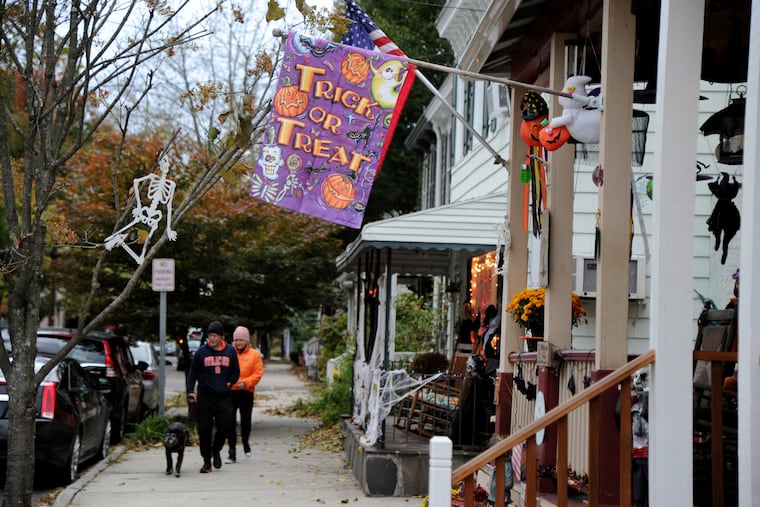When Halloween became America’s most dangerous holiday | Opinion
In the 1970s, people began to worry about poisoned Halloween candy, but the rumors weren't true.

The unquiet spirits that take over American streets every Oct. 31 may think Halloween is all about spooky fun. But what Halloween masqueraders may not realize is that in the early 1970s, real fear took over.
The media, police departments, and politicians began to tell a new kind of Halloween horror story — about poisoned candy.
No actual events explained this fear: It was driven by social and cultural anxieties. And there is a lesson in that about the power of rumors on this day of dark fantasy.
Poison candy fear
The Halloween candy scare began in 1970. An op-ed on Oct. 28, 1970, in the New York Times suggested the possibility of strangers using Halloween’s trick-or treat tradition to poison children.
The piece mentioned two unconfirmed incidents in New York and offered a series of frightening rhetorical questions. The author, Judy Klemesrud, wondered, for example, if that “plump red apple” from the “kindly old lady down the block … may have a razor blade hidden inside.”
Some readers accepted her questions as definitive fact.
Two days later, a 5-year-old child died on Halloween in Detroit after consuming heroin. Early media reports of his death cited his uncle’s claim that he had been exposed to the drug in tainted holiday treats.
By mid-November 1970, newspaper reportage showed that the child had in fact found the heroin at his uncle’s home — not in his bag of Halloween candy, as investigators had at first been told.
But on Oct. 31, 1974, another child died in Houston. This time, the death was a result of eating poisoned candy: The child’s father had murdered his own son by placing cyanide in a pixie stick.
This story of the Houston “candyman killer” quickly metastasized. Though it had no evidence, Newsweek magazine asserted in a 1975 article that “over the past several years, several children have died and hundreds have narrowly escaped injury from razor blades, sewing needles and shards of glass put into their goodies by adults.”
By the 1980s, some communities banned trick or treating while hospitals in some metropolitan areas offered to X-ray Halloween candy. Parent-teacher associations encouraged fall festivals to replace Halloween, and on Long Island a community group gave prizes to children who stayed home altogether for Halloween 1982.
In 1982 the governor of New Jersey signed a bill requiring a jail term for those tampering with candy.
Social tensions and fear
However, a comprehensive 1985 study of the of 30 years of alleged poisoning did not find even a single confirmed incident of a child’s death, or even serious injury.
Sociologist Joel Best at the University of Delaware, who led the study, called it an “urban legend.” Most reports of poisoned Halloween candy that appeared in print were editorials written by authoritative voices in politics and media rather than actual events. However, police all over the country urged parents to accompany their children while trick-or-treating.
Why did a series of rumors, very loosely based on a small number of incidents, convince lead to such panic?
In his book The Vanishing Hitchhiker, folklorist Jan Harold Brunvand argues that while urban legends may be grounded in actual incidents, they often come to stand in for real-world fears.
In the case of poisoned candy, my own research into American politics and horror tales suggests that those fears might have been driven in part by the problems facing the United States at the time.
Scholar of the Vietnam era Christian G. Appy, in his 2015 book American Reckoning, described the era as one in which defeat in Vietnam combined with “stagnant economic growth and soaring inflation” caused many Americans to see the country itself as “a victim of forces beyond its control.” This sense of victimization, combined with the national stress over the Watergate scandal, drove the sense that American society had become deeply unsafe.
All the social change in the 1970s fed the creation of urban legends, argues sociologist Jefferey S. Victor. A brutal story about strangers with poison candy seemed a preferable national fantasy to historical reality in the 1970s and 1980s.
The false case of the poisoned candy legend is another way that American fears manifested: as an easily understood threat to innocence.
Fears today
Today a majority of Americans, of all ages, see Halloween as an opportunity to celebrate excess.
But some Christian churches, especially those attended by conservative evangelicals, continue to declare a kind of “war on Halloween” every year. Many evangelicals, in their own description, see the holiday as a celebration of the occult, often viewed in their religious worldview as connected to a very literal Satan.
Halloween, with its association with the powers of darkness, can allow many legends to flourish — tales of dangerous outsiders, poisoned candy and other alleged threats to American life.
Social media may serve that role the rest of the year. But on Halloween, dark rumors may actually knock at the door.
W. Scott Poole is the author “Wasteland: The Great War and the Origin of Modern Horror.” A version of this piece originally appeared on TheConversation.com.